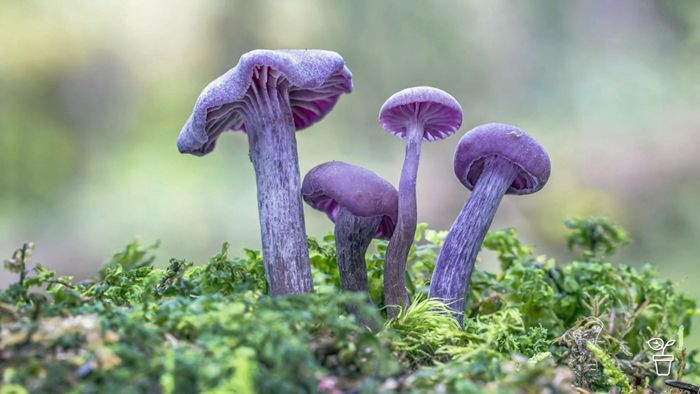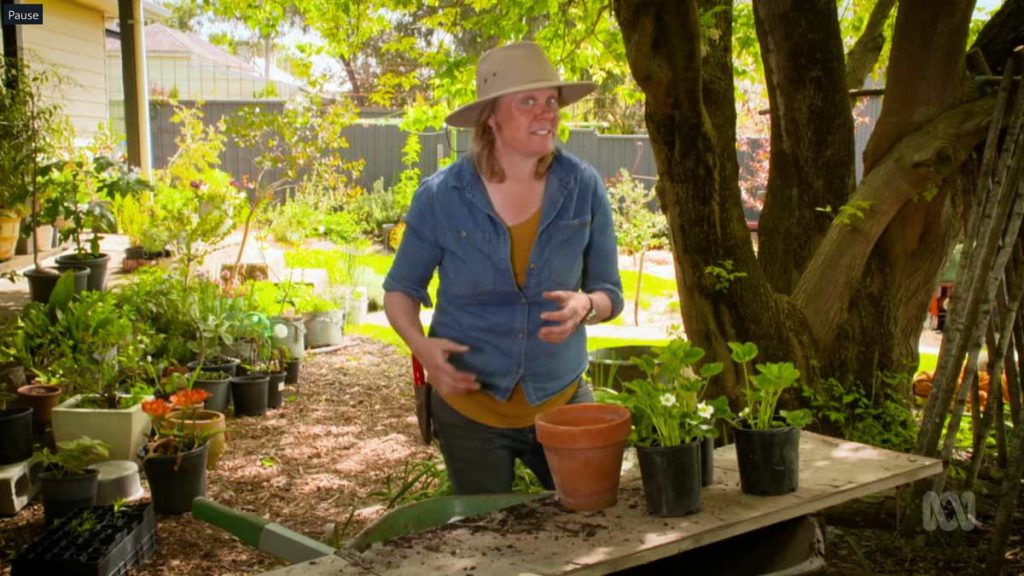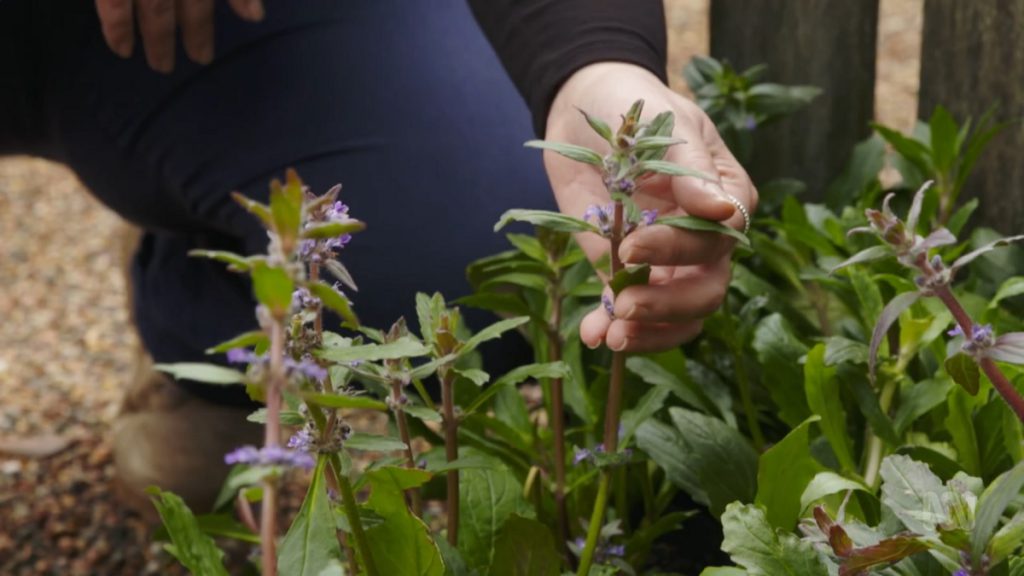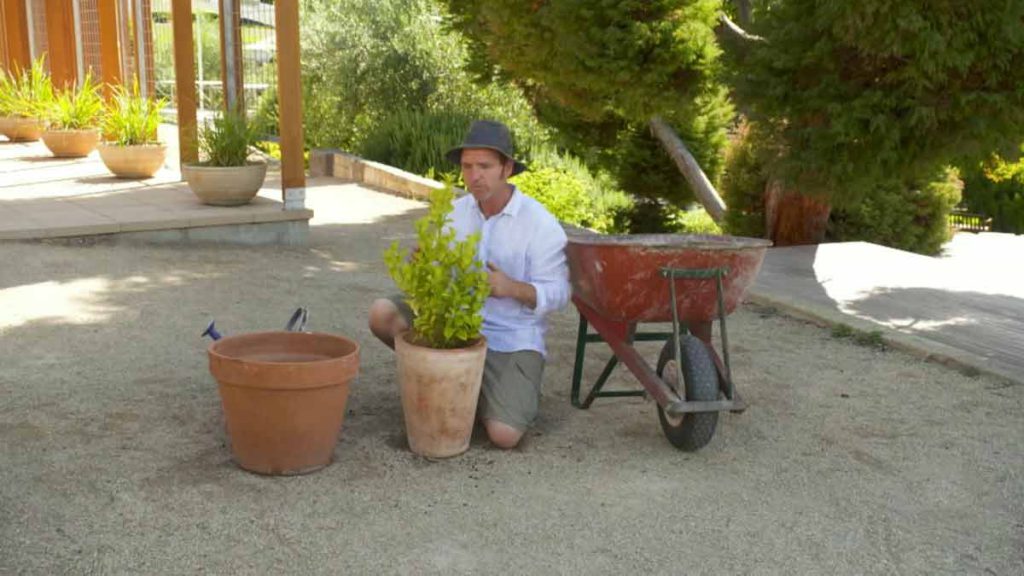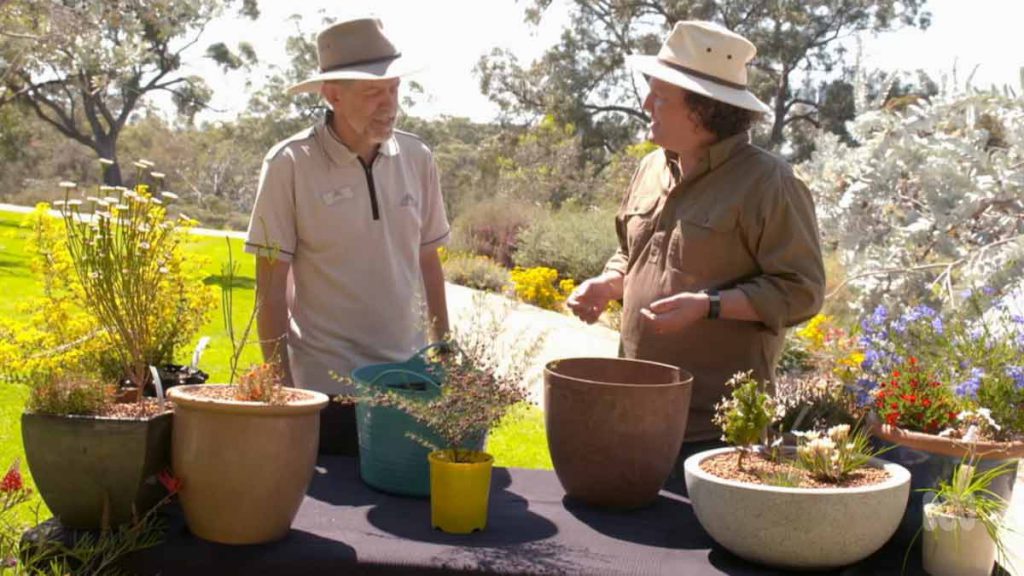Gardening Australia episode 38 2021: Millie Ross visits a cut-flower wonderland, Jane Edmanson learns how market waste makes garden goodies, Josh Byrne has tips for year-round greens, and garden designer Fiona Brockhoff shares plants and places that inspire her.
Inspiring, entertaining and full of practical advice, join Costa Georgiadis and the team as they unearth gardening ideas, meet avid gardeners and look at some of the most inspiring gardens from across the country.
Gardening Australia episode 38 2021
Bloomin’ Natives
Millie catches up with one of our premier native-plant growers, who has turned her hand to farming cut flowers, and who shows how to graft fussier plants. Millie visits retired nursery owner Marilyn Sprague, whose love of gardening and a good idea means she has now embraced a new business – growing native cut flowers. Marilyn demonstrates how to graft hard-to-grow plants onto more forgiving rootstock.
Marilyn’s garden is on low-nutrient clay shale with a low rainfall of 500mm a year, frost in winter and over-hot temperatures in summer, but she has found a stunning suite of plants that thrive in such harsh conditions.
She explains that she sold some colourful WA plants in her nursery and used to tell customers, ‘They come from deep sand so you’ll have to keep them in a pot’. When she retired, she thought she’d try growing some in the ground.
Because many WA species need near-perfect drainage, her first task was to build raised beds. “When I laid out the main garden area I got a bobcat and dug paths, which are primarily designed to catch and hold water, and the soil from them was mounded up in between the paths. I then added a lot of sand and stone as mulch – mainly because I think they’re beautiful and don’t burn, but also to hold the rain in the soil rather than it just running off. They also reflect sunlight and warmth through the foliage, which is what a lot of WA plants like.”
Year-Round Greens – Gardening Australia episode 38 2021
Josh shows how to keep your garden greens pumping all year round. Seasonal vegies are of course one of the great joys in a gardening life – that glut of ripe tomatoes in late summer, or the window of a few weeks’ in spring, when the asparagus spears erupt from the ground! But for serious vegie growers, alongside those delicious moments, are the crops that put food on the table no matter what the season.
One staple in Josh’s family garden are the green vegies, and he has developed a few simple systems to ensure there is something to harvest every day of the year!
Marketing Waste
Jane discovers how mountains of market waste is made into goodies for the garden. Operating as a bustling food market since 1867, the market receives about 100,000 visitors a year, buying fruit, vegetables, flowers, seafood and other delights.
This produces tonnes of food waste, much of which would normally go to landfill, but the team that manages the market for the City of Port Phillip decided to be proactive about finding a use for as much of the waste as possible.
Livin’ the High Life – Gardening Australia episode 38 2021
Clarence introduces some great epiphytes that are a head and shoulders above other plants.
With over 20000 species of plant on this continent, some have had to come up with some pretty creative ways to survive in what can be a crowded market! Enter the epiphytes! Instead of growing in the ground, epiphytes are plants that have adapted to grow on other things for physical support. Instead of getting their nutrients from the soil, epiphytes find nourishment in small pockets of animal droppings, rain and decaying bark and leaf litter that has been caught in cracks and crevices.
Epiphytes can be found growing on things like tree trunks, branches, boulders and even cliff-faces. In nature, this allows them to exploit resources other plants can’t reach and helps them to avoid predators. Why compete with everyone at ground level when you can enjoy the high-rise life? It’s a successful strategy, and different kinds of epiphytes can be found all round the world, including Australia. In the garden, you can use epiphytes to grow where others can’t – balconies, walls, roofs and window ledges.
Perfectly Snug
Tino meets a gardener who has created a beautiful and productive plot that is also wonderfully welcoming for wildlife.
30 kms to the south of Hobart, Tasmania, lies the small coastal hamlet of Snug – recognised internationally for its natural attributes – large nature reserves and wild places, remnant vegetation and stunning scenery, as well as abundant wildlife. It is not hard to see what drew Mandy Richardson to purchase a property in the area in 2011! Once her house was built, she focused on the garden: “I knew I wanted an edible area with fruit trees, exotics and vegies, and a native garden up around the house, so I have the garden divided into zones which enables cultivation and co-habitation with the abundant native wildlife.”
Fungi Facts
Jerry shows some tips for preventing fungal outbreaks in your garden. Fungi are incredibly interesting organisms. They can grow everywhere and in some pretty extreme environments; at the bottom of deep seas, deserts, highly-saline environments, outer space, the grout in your shower and even inside unstable nuclear reactors. Unsurprisingly, they also live in your garden.
Gardeners will often first become aware of fungi in their garden when they see mushrooms. These are the fruiting body of the fungus, a bit like a flower on a plant. They feed on organic matter that is decaying and create compost as they do it, so it’s a good sign to find them; it shows you have a good amount of organic matter in the soil!
Fungi can also form “mycorrhizal” associations with plants, where the fungi connect with plant roots. This association is commonly beneficial, with the fungi feeding the plant nutrients it could not otherwise access, and the plant giving carbohydrates in return.
